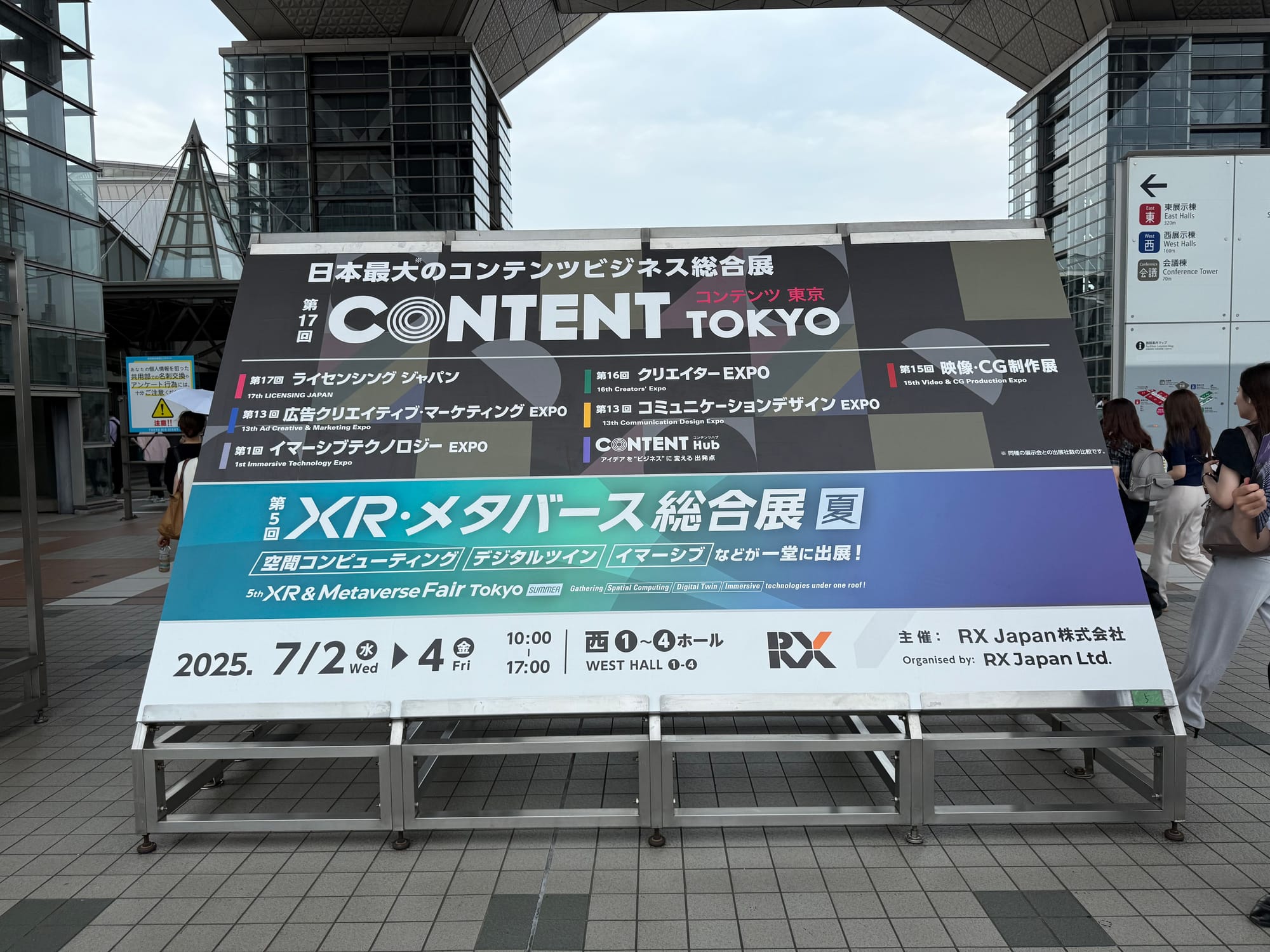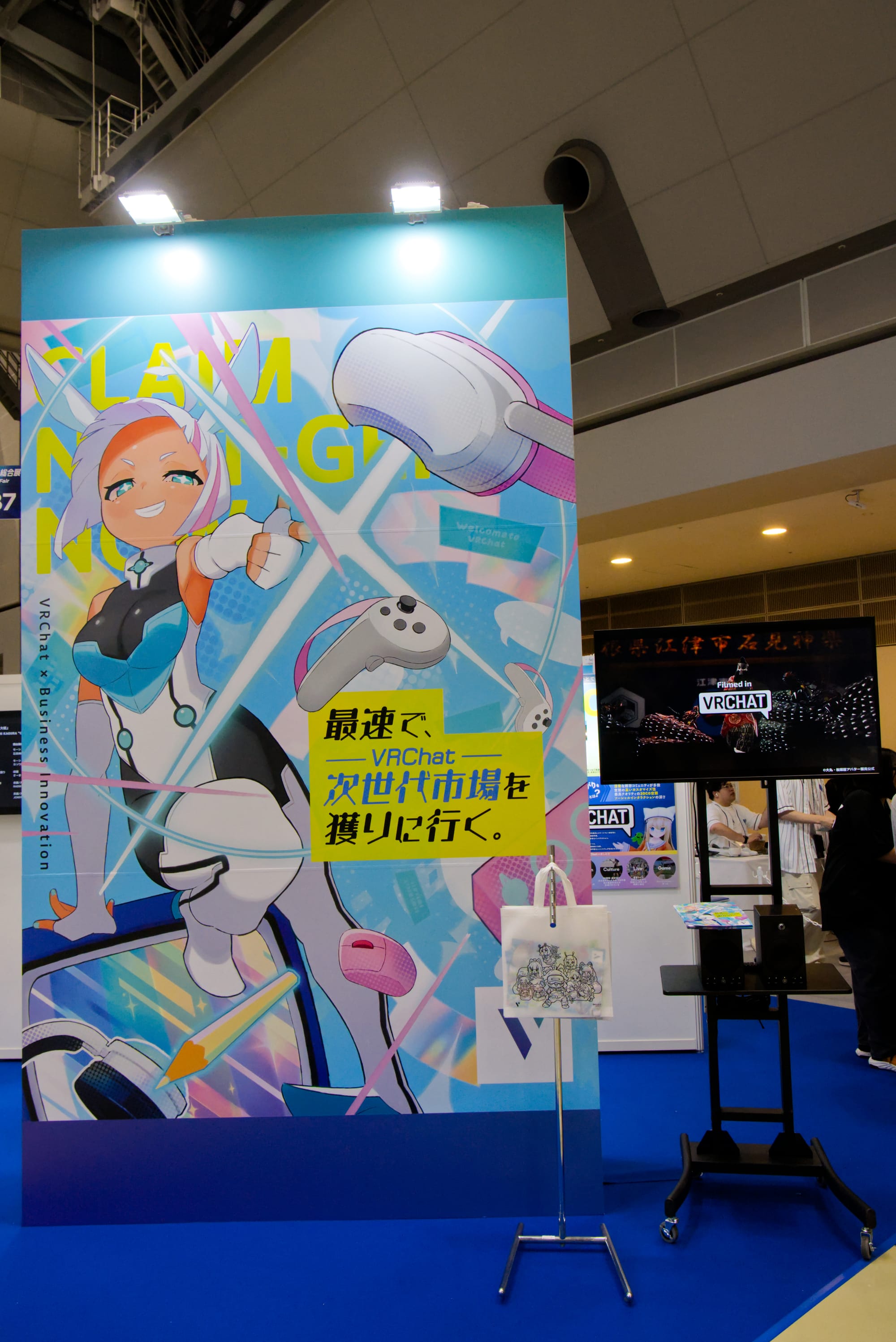Earlier this month in the halls of Tokyo Big Sight, the latest XR and Metaverse Fair Tokyo was held.
It’s one of Japan’s largest events for companies to showcase their work crafting the future of AR, VR, and mixed reality. In theory, the event should serve as the springboard for the industry in Japan, a chance to put a forward-facing outlook on a growing industry with increasing commercial, industrial, and at-home adoption for XR technology. So why does no one here seem to have new ideas, or confidence in themselves?
International companies are considered the primary pioneers in this industry, whether we’re talking about China’s growing dominance with display glasses from Xreal and Viture or Meta and Apple’s VR headsets. Despite this, Japan is still a country with an abundance of companies making strong cases for the unique advantages this technology can bring to people’s lives.
In the two brief years since the event’s induction in 2023, major Japanese companies like Universal Studios Japan, Sony, DMM, LINE, Nissan, and more have presented at the event. They showcased how they’re using this technology to improve their efficiency or engage audiences. Some of these have gone beyond the business-to-business corporate posturing to become realized technologies too. For example, Universal Studios Japan is always utilizing VR and XR to enhance attractions to its parks.

Yet compared to the strong presence of these major players in years past, this is an event driven more by upstarts. That’s far from a bad thing, though it’s fair to say the practicality of the technology being shown by companies from Japan or across Asia at this event was notably mixed. On the one hand, software solutions company Techfirm was there showcasing a new system for remotely managing and linking headsets together for group training in XR. It’s using a proprietary software known as OneXR that appeared genuinely impressive in the firefighter simulation shown. On the other hand, one Korean company’s book startup, despite domestic success in their home country, hardly feels inspiring when the technology is little more advanced than a Nintendo 3DS AR minigame.
It’s an inconsistency that defined the event, though there were exciting technologies on display. Most impressive were the demos being showcased by Nikon, a prominent innovator in the world of VR video production through their lineup of lenses designed for capturing video for the format. Here, the company showcased a new way their recording equipment could be used to enhance live broadcasts in VR, particularly for sports.
We’ve already seen examples of how sports broadcasting can take on a new dimension with mixed reality thanks to Apple Vision Pro. Those watching the NBA using the official application can experience the action from a unique mixed reality viewpoint utilizing a 3D render of the court viewed from a top-down perspective that provides a whole new way to experience the action. While the company’s MR broadcast demo is comparable to the advancements seen in the NBA Vision Pro application, there are other enhancements that go far beyond what is being implemented here.

Instead, Nikon is using the 3D imaging captured using their dual-lens VR lenses to recreate a 3D map of a baseball field that allows viewers to watch the action from anywhere in the stadium. That includes unique locations such as directly on the field of play where recording would otherwise be impossible. Rather than generating models and using tracking data to create a 3D approximation of the match, the 3D imaging of a match from an array of lenses and cameras placed around the stadium allows for the players themselves to be rendered directly.
A viewer can select any location to watch the action from here. In two demos, one allows you to watch the action while standing directly next to the batter, and the other shows us watching the pitch and hit from an outfield position.
The appeal for a sports audience is obvious. This is baseball like it has never been seen before. Compared to the limited angles of terrestrial sports broadcasts, this was an opportunity to view a match from pitch level in a way never before possible in this manner. For the tech demo, this is achieved using pre-recorded footage with 3D models created from low-resolution pixelated renders of whatever their camera could capture. Speaking to representatives, the hope is that this could become a real-time feature of live sports broadcasting in the future.
It’s an exhilarating demo, but one of very few to show a new technology executed well with genuine, clear, and obvious mass-market potential for adoption in ways that could propel the industry forward. If anything, this exposes how much of the event lacked a forward-facing, exciting vision for the future, a fact particularly noticeable when compared to other shows taking place alongside it inside the same venue.

The XR and Metaverse Fair Tokyo was part of a broader collection of business-to-business festivals hosted simultaneously across the vast halls of Japan’s largest event space collectively known as Lifestyle Week. Collectively, despite focusing on vastly different industries, they shared a core goal: centered on a range of fields in fashion and culture with high engagements and ever-shifting consumer habits, this was a glimpse into the future. You had a licensing expo representing the growing importance of licensed characters and collaborations. You had a fashion fair. You had a design expo centered on digital and physical design that would appeal to general audiences.
You even had an Oshikatsu Expo, a term representing activities from communities where dedicated fans of an artist, sports player, or celebrity may create custom products and more to support their favorite talents, capturing the ways in which the industries were reacting to how audiences were engaging in these spaces.
While I only glanced into these spaces briefly during a free moment, the booths showcasing at these spaces were far in contrast to the sluggish and uncertain showcases I witnessed at the XR and Metaverse Fair. Particularly with the Oshikatsu Expo, I’ve seen genuine experimentation for how companies were adapting to a growing market for fans supporting their favorite musicians in Japan. I live in Japan and follow numerous musicians, and it’s common to see fans buy advertising space for a celebrity’s birthday or buy flowers to showcase outside a concert venue. I’ve supported fan projects on the latter. You see companies experimenting with AR enhancements to these displays that feel more advanced than a few AR showcases in the space supposedly dedicated to the industry.
These events may at first appear unrelated to a discussion of the XR showcase, but I mention this for good reason. Whereas many more mature spaces had an understanding and vision for their field and really sought to showcase a potential future, the far newer and supposedly more forward-facing XR industry feels lost and directionless. It’s not that the industry isn’t investing in genuinely exciting technology or taking advantage of the technology with innovations not seen elsewhere. The integration of XR glasses by Japanese company Nexco for engineering visualization in the field is impressive, while the aforementioned VR capturing technology by Nikon is far in advance of that seen elsewhere.

A few weeks after this event, at the indie game convention BitSummit, the VR Yokocho showcase was a space where VR companies from Japan and beyond could showcase their gaming works to the public. Here, Japanese companies like MyDearest and CharacterBank were exciting audiences with one of the busiest booths at the show, showcasing already-released titles and upcoming releases to people unfamiliar with the technology. With Expo 2025, while Virtual Expo feels underwhelming, the Japanese government and companies like Capcom with Monster Hunter Bridge directly funded some of the most exciting VR and XR exhibits at the show, pushing current technologies to their limits. The Japanese XR industry is making huge strides in commercial, gaming, and non-gaming contexts.
Across Asia is also where much of the current innovation in XR can be found, and they had a strong presence here. Xreal showcased their most recent One Pro display glasses, showing both gaming and non-gaming applications. You can play flatscreen games in virtual space and interact with objects around you with surprising reliability. This provides a rendering field of view that, while still small at under 60 degrees and an area that remains limiting in the world of display glasses, is starting to show a glimpse of the potential of eventual consumer AR glasses.
Beyond these bright spots, however, it often feels like the industry had lost confidence in itself and didn’t know what the future could or should be. By this point, the metaverse concept, as once enthusiastically proclaimed by Mark Zuckerberg, has been litigated and ultimately deemed not to be compelling by the broader public in its current form. Yet the amount of companies continuing to push this and many other ideas feels trapped in a former heyday praying for a future that already appears impossible. We had a company selling billboards for the metaverse. We also had an NFT rally game being showcased, because that’s what everyone is salivating over in 2025.

Despite attempts to make VR the near-term future of virtual meetings with Workrooms, people are still sticking to Zoom calls as their software of choice, and that recently came to Quest as a 2D app. VRChat, which has found success as an application that lets anyone make unique online communities, create art, explore virtual filmmaking, or even bridge the real and virtual worlds through events like Virtual Market, was here to showcase none of these assets that companies could take advantage of. Instead, they were here to sell themselves as the future of the virtual office, ready for workers to commute in VR.
In Japan alone, VR is a nearly-$4 billion industry and that’s expected to grow. So why are companies so scared to showcase all the assets and potential future applications of VR and XR that justify these lofty predictions? Why are new advancements being shunned for attempts to relitigate ideas the public has rejected? Beyond a few choice exceptions, why does no one wish to showcase their concepts for how to encourage a broader public to adopt this technology?
There is a noticeable disconnect in how people currently use XR devices and how it could be used in exciting ways to get the public on board with the technology. Cluster, a long-running Japanese metaverse application with both flat and VR applications that has found genuine mainstream adoption, had a presence at the event. Thanks to major collaborations with everyone from TV Asahi to local and national governments, the app has been one of Japan’s biggest success stories in the space. More recently, VTubers have used the application to interact with fans as a new form of direct communication between talent and their audience. This was nowhere to be seen as the company flatly showcased a teaser for their 10th anniversary celebrations.
As much as I find great potential in the industry and have gotten to know many creators over the years working on VR and XR technology in Japan, what’s missing from this event is a message to audiences. Despite the event’s name, the metaverse remains a tough sale for most audiences. While Apple’s headsets are impressive, even they are struggling to justify their current high asking price, and it’s now reportedly creating a much cheaper Apple Vision Air. The industry needs a pitch that will ensure the industry can match growth projections. That requires going beyond the core audiences for the technology reading this article to a general audience. That’s what was most notably absent here, unlike what was seen in the broader Lifestyle Week showcase.
Where that potential is being realized, such as with Xreal and Nikon, I see an industry retaining its creativity while understanding that the only way to bring this work to new people is to offer something both accessible and only possible in this field. Unfortunately, more broadly, I’m leaving the event more deflated than anticipatory about this part of the industry’s belief and ingenuity to bridge that gap.
